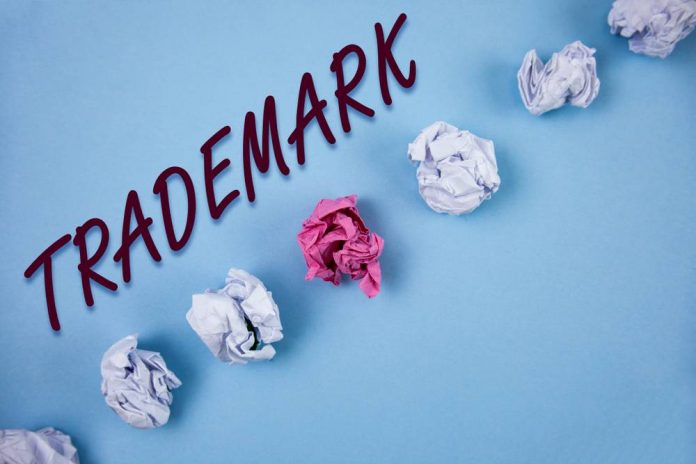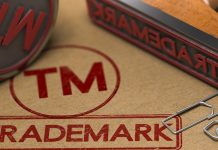This article is written by Ruchi Arora.
Table of Contents
Introduction
A Trademark is a symbol that represents the particular goods or services offered by an entity/organization. It allows the consumer to identify the goods that have been proved satisfactory to him and also to differentiate with the goods belonging to another entity. The goodwill that a trademark develops over time signifies a very important role in the sale of goods or services. In other words, if the product bearing a particular trademark has been well established in the market then it would be economically beneficial to the trademark owner and he/she can reap the benefits from this goodwill that is formed with time.
The goodwill along with the trademark is an intangible property of the trademark owner. Trademark confers a limited exclusive right to the owner only insofar as is necessary to prevent customer’s confusion and to facilitate differentiation of the trademark.
Now that we understand what a trademark is, it is important to also understand the purpose of registering the same.
To know more about Trademark please visit
Purpose of trademarks
Cost Saving
It assists the consumer in taking decisions before buying any particular service or good. For instance, if a person knows that the quality of that particular brand is good then he would prefer that brand without being much experimental, and thereby reducing the burden on his pocket
Time Saving
It also helps the consumer in identifying the product and its origin. It does not put the consumer in a hunt game and without wasting time he can take the desired product or services
Retains the Quality
Trademarks bring recognition and once the product has developed it’s good reputation in the market, then the manufacturer would invest his efforts in maintaining the quality of his product at all times.
Nevertheless, the process of registration of the trademark takes about 18 to 24 months in India. Although this may seem like a long duration and a cumbersome process, a registered trademark brings an exclusive right with it which ultimately helps the business flourish.
There are several aspects which need to be considered before applying for the registration of the trademarks. Let us read on to find out more.
Top Aspects to qualify your logo for registration
To know more about Trademark Registration please visit
It is advisable not to rush to a logo designer for your trademark. Always keep in mind that your mark is an asset to your business. Furthermore, it gives the opportunity “to stand out from the crowd”. Be mindful that your trademark should be distinct from the other marks to avoid ambiguity in the minds of the general public.
Let us look at some of the guidelines that you can follow when framing your unique mark:
- A person has an extensive range to choose from. For example, a mark can constitute letter/s, symbols, labels, colour combinations, numerals, unique packaging style, etc. It is advisable to have a word mark along with a logo as it not only creates a deep impression in the mind of the consumer, but is also economical as the applicant can file a single application for a word mark along with logo under the category of “Device mark’.
- Trademarks should be able to identify or distinguish its goods or service from the marks that belong to others. Additionally, it should be distinctive in itself. A mark which has a direct reference to the character of the goods/services offered may pose a problem during registration. For instance, you are selling books and applying for the trademark “BOOKS”, such marks are ineligible for protection as no one can be granted monopoly over such terms. On the contrary, you should opt for fanciful marks which are invented like Kodak for camera or arbitrary marks which have no relations or do not signify the products or services offered thereunder like Neelkamal for chairs or suggestive marks which only hints at the products or services like 24 SEVEN for convenience stores.
In M/s Hindustan Development Corporation Ltd. v. The Deputy Registrar of TradeMarks, it has been held by the Court that the mark “RASOI” for edible oils cannot be registered as a trademark because such mark indicates the nature of the product.
- Your mark should not consist exclusively of indications which may further your business to designate the following:
- Kind: use of words such as Old, New, Large, Extra Large etc;
- Quality: use of laudatory words such as Good or Best;
- Quantity: using numerals that indicate weights or measures For eg – Kgs, litres, etc;
- Intended purpose: Words which directly refer to the use of goods or services like Rustfree for Paints;
- Values: indicating worth or importance. For eg – 24K for gold, etc;
- Geographical Origin: In case the goods or services has the reputation associated or is closely related with the geographical location of the product or service the reputation associated or closely related with the goods or services applied therein, then it may attract objection. The same applies to the case where the name of mountains is used for agricultural produce, name of rivers, seas, oceans for fish products, name of streets etc;
- For example: MEDITERRANEAN for transport services ATLANTIC for prawns. On the contrary the example of registrable marks would be ATLANTIC for footwear MT EVEREST for paper, stationery, etc;
- Please note that the registration of geographical names are not allowed unless it is proved that the mark has acquired distinctiveness because of its use or if it is a well known mark;
- Further, Geographical names, used in a fanciful manner, such as NORTH POLE or MOUNT EVEREST for bananas, which are not likely to be taken as indicating the origin of the goods, can be accepted.
- It is important to also bear in mind that your mark should not contain the following:
- Any matter likely to hurt the religious sentiments of any class or section of the citizens of India.
“Certain names and pictures of Gods and Goddess and also religious heads are prohibited from being registered as trademarks in terms of directions issued by the Central Government under section 23(1) of the Trade & Merchandise Marks Act, 1958.”
2. Scandalous or obscene matter. Scandalous marks are those likely to offend accepted principles of morality. A mark which on its face appears to be offensive shall be refused for registration.
3. Emblems Act prohibits generally registration as trademark or design which bears any emblem or name the use of which is in contravention of section 3 of the Emblems Act.(Please refer: Emblems Act 1950).
4. Exclusive shape of the goods which results from the nature of the goods. The basic shapes shall be available for use by the public at large not to create a monopoly for one person/entity. For instance: The shape of an egg tray is dictated by the need to accommodate the shape of eggs. Registration of a picture of a banana in respect of “fruit” would be just as objectionable as registration of that word would be in respect of “bananas”.
- Devoid of being deceptively similar – Take into consideration that a mark should not create confusion in the minds of the public. It should not be deceptively similar to the marks which are already registered. In order to avoid such a situation, please conduct the search report before applying for the trademark or before finalizing your logo. A mark shall be refused registration if it is identical/similar with an earlier trademark covering similar goods or services as are covered by earlier trademark (whether registered or unregistered).
Conclusion
Marks should be distinctive, unique and should be one’s own invention. Though they can be suggestive of the goods and services being offered thereunder but not descriptive else it may get refused for registration.
It is highly advisable to get your mark registered at the earliest, though it is not compulsory – it will prove beneficial for your own business. To sum up, I suggest that once you finalize your logo, hire a Trademark attorney, do not try to jump on your own into the field. The Trademark attorney helps in rationalizing the process since registration not only involves the process of filing an application but also includes detailed introspection of the mark from various aspects laid down by the registry as well as it involves different stages including the phase of objection and opposition, for this reason, I advise you to consult the attorney before beginning the process on your own. Services from the professional will assist not only in conducting a search report but also keep you vigilant before applying for the registration. Their role is not concluded post-registration but they will also assist in protecting your trademarks from getting infringed by a third party as well.
Trademarks registration and making it a popular brand name through advertisement is an expensive exercise. Invest your time and happy business!
Students of Lawsikho courses regularly produce writing assignments and work on practical exercises as a part of their coursework and develop themselves in real-life practical skill.
LawSikho has created a telegram group for exchanging legal knowledge, referrals and various opportunities. You can click on this link and join:
 Serato DJ Crack 2025Serato DJ PRO Crack
Serato DJ Crack 2025Serato DJ PRO Crack











 Allow notifications
Allow notifications



